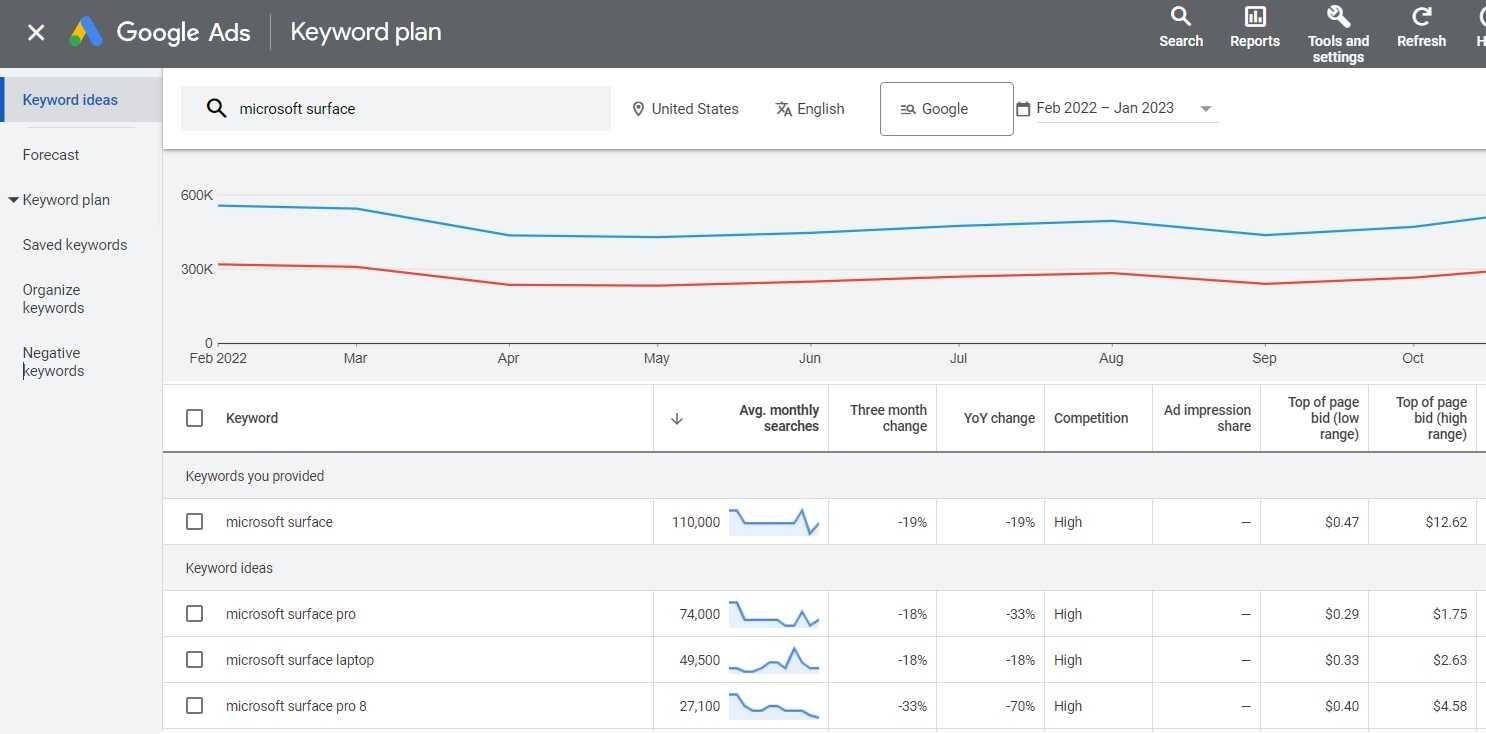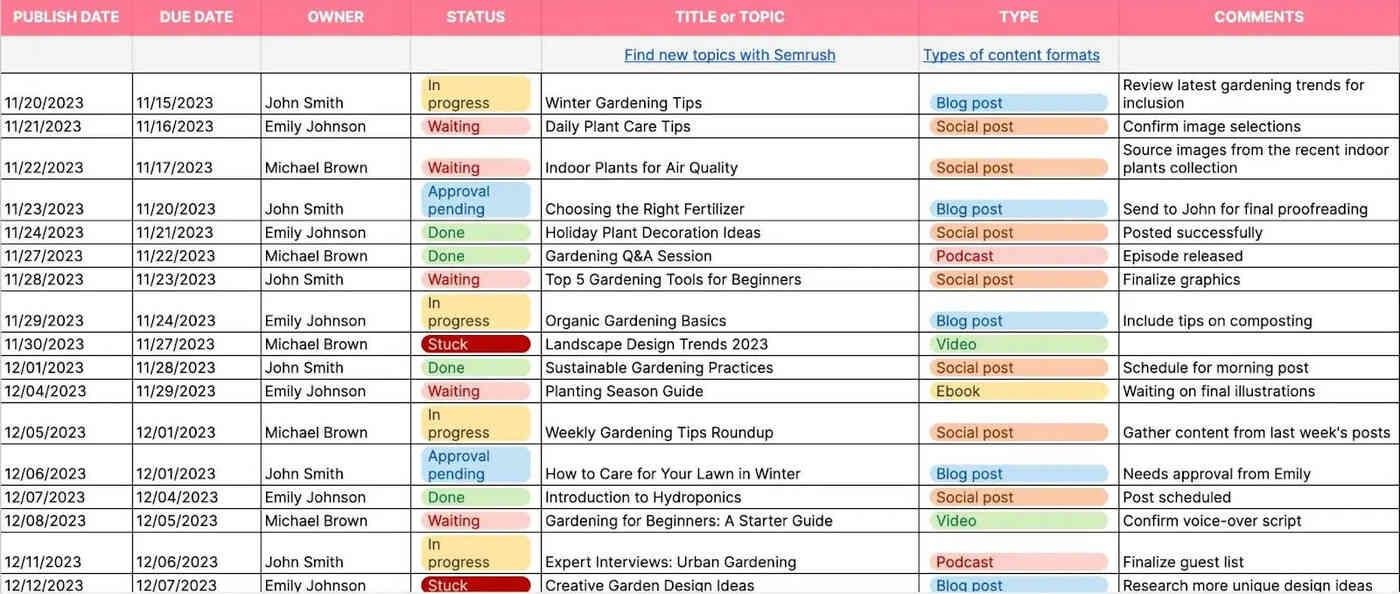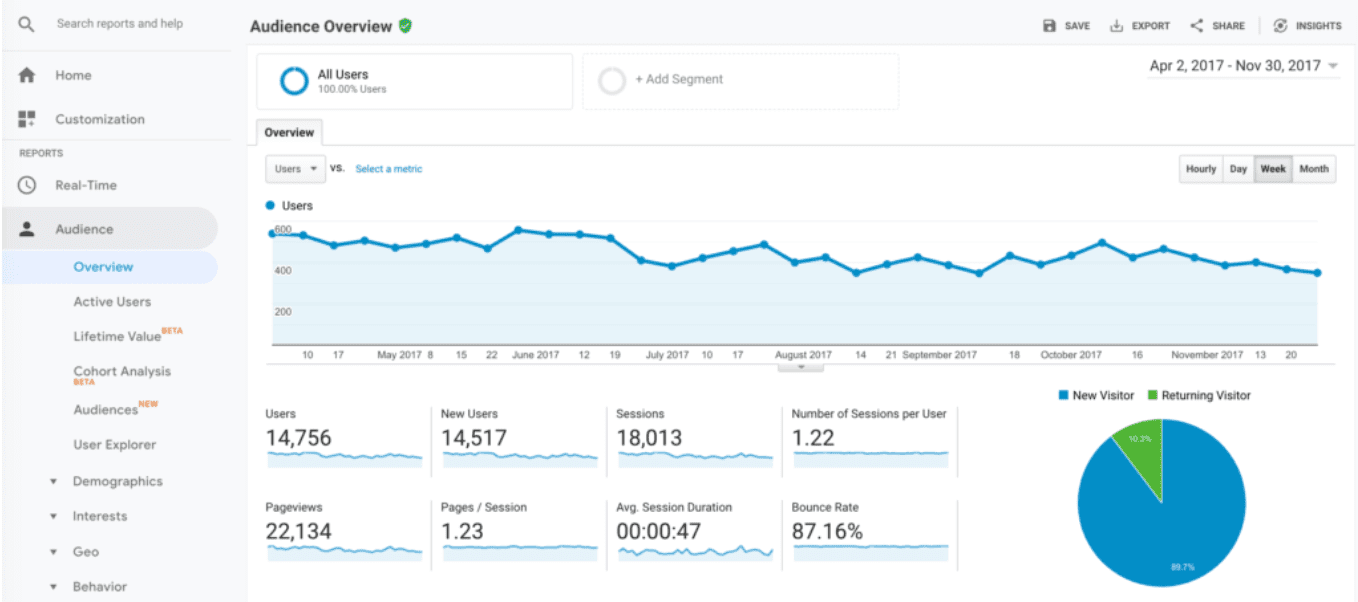Did you, at any point, get stressed by all those content marketing activities you’ve had to handle? I totally get it—I’ve experienced that myself.
Handling articles, social networks, and due dates can really overwhelm you. And you might be asking yourself if there’s any solution to ease things.
Well, there is – a content marketing checklist.
Think of this checklist as a super helpful tool for staying systematic and methodical. It arranges all your essential tasks in an orderly fashion that’s easy to follow.
In case you’re not sure about its effectiveness, hang tight. In this blog post, I’ll walk you through the ways it can make your workflow more efficient. Not only that, I’ll also explain to you how it can take your content strategy up a notch.
Disclaimer: If you buy any products through links on this site, I may earn a commission. But it doesn't make any difference to your cost, and it helps me keep this blog running. So you could always read my articles for free.
Why use a content marketing checklist?
A content marketing checklist lets you monitor all the steps involved in developing, publishing, and distributing your content.
By walking you through every stage of your content strategy, it sees to it that you don’t skip any of the essentials.
Without a content marketing checklist to guide you, it’s easy to forget critical actions such as keyword research, editing, or publishing before deadlines.
And forgetting to implement important steps can lead to underperforming content, not reaching your intended markets, or loss of lucrative business opportunities.
All in all, a content marketing checklist keeps your projects and assets organized, ensuring a smooth content marketing workflow.
Content marketing checklist
To build an effective content marketing system, you should have the right framework. Here are the key steps you’ll need to implement for success with content marketing.
Define content marketing goals
Defining content marketing goals is crucial for creating a focused and effective strategy.
Start by identifying what you want to achieve—whether it’s increasing brand awareness, driving website traffic, generating leads, or boosting customer engagement.
Your goals should be specific, measurable, achievable, relevant, and time-bound (SMART). For example, you could aim to boost website traffic by 25% over the course of six months.
Clear goals help guide your content creation, ensuring each piece aligns with your overall strategy and business objectives.
By setting well-defined goals, you can measure your progress, refine your approach, and ultimately achieve greater success in your content marketing efforts.
Define your target audience
Having a clear sense of your target audience is crucial for developing high-performing content. A good content marketing checklist will always have this step.
To defne your target audience, begin by identifying the demographics of your ideal customers—age, gender, location, education level, and income.
Next, delve into their psychographics: interests, values, and lifestyle. Consider their online behavior—what social media platforms they use, what type of content they consume, and how they prefer to engage.
For example, if you’re a fitness brand targeting young professionals, your audience might be aged 25-35, interested in health trends, and active on Instagram and YouTube.
Here are some steps you can take to know your audience:
Conduct Surveys: Ask your existing customers about their preferences and habits.
Analyze Data: Use website analytics tools such as Google Analytics to understand the visitors who are engaging with your content.
Create Customer Personas: Build detailed profiles of your ideal buyers to guide your content strategy.
Monitor Social Media: Observe conversations in your niche to identify common interests and pain points.
By defining your target audience, you can customize your content to meet their needs, leading to better engagement.
Conduct keyword research
Keyword research refers to identifying the words and phrases people use in their online searches that are relevant to your business.
This process is crucial because it helps you understand what topics are relevant and popular among your target readers. So you can develop the content they like.
For example, if you run a travel blog, knowing that “best travel destinations 2024” is a highly searched term can guide you to create content that attracts more visitors.
To get started, you can use keyword research tools like Google Keyword Planner, Semrush, or Ahrefs.

Look for keywords with a good balance of high search volume and low competition. Analyze the intent behind these searches to ensure your content matches what users are looking for.
Additionally, consider long-tail keywords—more specific phrases that may not have many people searching for them, but whoever searches for them is more likely to buy.
By targeting such keywords in the beginning, you can strategically improve your search engine rankings, and enhance your content marketing effectiveness.
Generate content types and ideas
This involves strategically deciding what kind of content (like blog posts, videos, infographics) and specific subjects will best engage your audience and achieve your marketing goals.
This is an important step in a content marketing checklist because it ensures your efforts are focused and effective, providing value to your audience while driving traffic, engagement, and conversions.
For instance, if you run a tech blog, you might decide to create tutorials, reviews, and industry news.
To start, understand your audience’s preferences and challenges. Conduct surveys or use analytics to see what types of content perform best.
Next, brainstorm topics that address your audience’s needs or answer their questions. Use tools like BuzzSumo or Google Trends to identify popular subjects in your niche.
This structured approach helps maintain a steady stream of relevant and engaging content, keeping your audience interested and coming back for more.
Create a content calendar
A content calendar is a calendar-style framework you can use to plan and organize the creation and publication of content over a specific period.
It’s important because it helps maintain consistency, ensures timely delivery of content, and aligns your posts with key dates and marketing goals.

For instance, a fashion blog might use a content calendar to schedule posts around seasonal trends and upcoming holidays.
To begin, identify your key content themes and objectives. Next, map out important dates, such as product launches or industry events, and schedule relevant content around these.
You can use tools such as Google Calendar, Trello, or dedicated content calendar software to keep track of your schedule.
A content calendar also lets you assign deadlines for each piece of content and include details like topics, formats, and target audiences.
Set a content production workflow
A content creation workflow is a structured process for producing content from idea to publication. It streamlines tasks, ensures consistency, and helps meet deadlines.
For example, a company blog might have a workflow that includes brainstorming, writing, editing, and publishing.

Image Source: Narrato
To establish a content creation workflow, start by defining each stage of the process. And define roles and responsibilities for each team member at each step.
Tools like Asana or Trello can help you at this step in terms of tracking progress and setting deadlines. Create templates and guidelines to maintain quality and consistency across all content.
Have an SEO strategy
SEO involves optimizing content to improve its ranking on search engines like Google. It’s crucial to have it in a content marketing checklist because higher rankings increase visibility, drive more traffic, and boost engagement.
For example, if you write a blog post about “healthy meal prep recipes,” optimizing it can help your post appear when users search for related terms.
Use keywords strategically in your post’s title, headings, and throughout the content. Ensure your content is well-organized, with a clear introduction, body, and conclusion, and include internal links to other relevant posts on your blog.
Also, optimize your images by adding descriptive alt texts, user-friendly names, and compressing them before uploading. In fact, ensure your whole content is mobile-friendly and loads quickly.
Regularly update your posts to keep them current and relevant. By following these steps, you can enhance your blog’s search engine performance and attract more readers.
Set up analytics reporting
Setting up analytics reporting for content marketing involves tracking and measuring the performance of your content to understand its impact and effectiveness.
It helps you identify what’s working, what isn’t, and where to focus your efforts to improve results. For example, if your blog post about “DIY home improvement” is driving lots of traffic but low engagement, analytics can highlight these insights.
To set up analytics reporting, start by choosing the right tools, such as Google Analytics or other content analytics platforms.

Configure your goals and tracking metrics, such as page views, time on page, and conversion rates. Create custom reports or dashboards to regularly review key performance indicators.
Keep updating old content
Updating old content involves revising and refreshing existing blog posts, articles, or pages to ensure they remain relevant and accurate.
It’s an important part of a content marketing checklist because it helps maintain the quality of your content, which can improve your search engine rankings too.
For example, if you have a blog post about “2023 travel tips” that is now outdated, updating it with current information can provide more value to readers and attract new visitors.
To update old content, start by identifying which pieces need refreshing, based on their performance and relevance. Review the content for outdated information, broken links, or changes in best practices.
Add new data, insights, or examples to enhance its value. Make sure to update any visuals or statistics to reflect the latest trends.
Finally, promote the refreshed content to your audience to maximize its reach and impact. This approach helps keep your content current and authoritative.
Promote content via email
Email is an effective channel to distribute valuable, relevant content to your subscribers. With email, you can reach your audience directly, build lasting relationships, and drive conversions.
For example, a fashion retailer might send out a monthly newsletter featuring style tips, new arrivals, and exclusive offers.
To effectively use email for content marketing, the first step is to build an email list of engaged subscribers.
Segment your audience based on their interests and behaviors to send personalized content. Create engaging and informative email content, such as blog updates, industry news, or special promotions.
Ensure your emails have a clear call to action, encouraging recipients to take the next step, whether it’s visiting your website or making a purchase.
Monitor your email performance to refine your strategy and improve future campaigns. This method helps keep your audience engaged and informed while driving meaningful results.
Promote content via social media
Content marketing via social media involves sharing valuable and relevant content on platforms like Facebook, Instagram, LinkedIn, or Twitter to engage your audience and promote your brand.
Start by choosing the platforms that best align with your target audience. Create engaging content that’s tailored to each platform’s strengths and audience preferences.
Not just that. You should engage with your audience by responding to comments, participating in conversations, and using relevant hashtags.
Advertise your content
You can also use paid ads to distribute your content if you have the budget. This method is important because it allows you to reach a targeted audience quickly and effectively, boosting visibility and engagement.

For example, if you run a fitness blog, you might use Google Ads to promote your latest workout guide to users searching for fitness tips.
To begin, set up your ad campaigns on platforms such as Google or Facebook. And make sure that your ads are compelling and relevant.
Also, to direct people who click on your ads, create landing pages that provide a seamless experience and align with your ad’s message. Monitor your campaign performance using metrics such as click-through rates and conversion rates.
Analyze key metrics
Monitoring the performance of your content is a key part of a content marketing checklist as it helps you understand what resonates with your audience. It also tells you where to put your resources, and the best ways to refine your strategy for better results.
For example, tracking metrics like page views, social shares, and engagement rates can reveal which blog posts are most popular.
To effectively use content marketing metrics, the first step is to identify your key performance indicators (KPIs). These could include conversion rate, website traffic, and number of leads generated.

Image Source: CMI
How do you get this data? Use Google Analytics, social media insights, and email marketing reports to gather data.
For instance, if you notice high engagement on posts with visual content, you might decide to incorporate more images and videos in your future content.
This data-driven approach ensures your content strategy remains aligned with your audience’s preferences and business goals.
Over to you
A content marketing checklist is an invaluable tool for ensuring that your content strategy is comprehensive and effective.
By following a well-structured checklist, you can make sure every piece of content is optimized, relevant, and aligned with your marketing goals. It helps streamline your workflow, avoid common pitfalls, and maintain consistency across all channels.
A checklist ensures you cover all critical aspects of content marketing. Regularly updating and refining your checklist based on performance data and evolving trends can further enhance your strategy.
Ultimately, a thorough content marketing checklist checklist helps drive engagement, and supports your business objectives.
Did I miss anything? Did you try these tips? Do you have any questions or comments? Share your thoughts below in the comments section.




